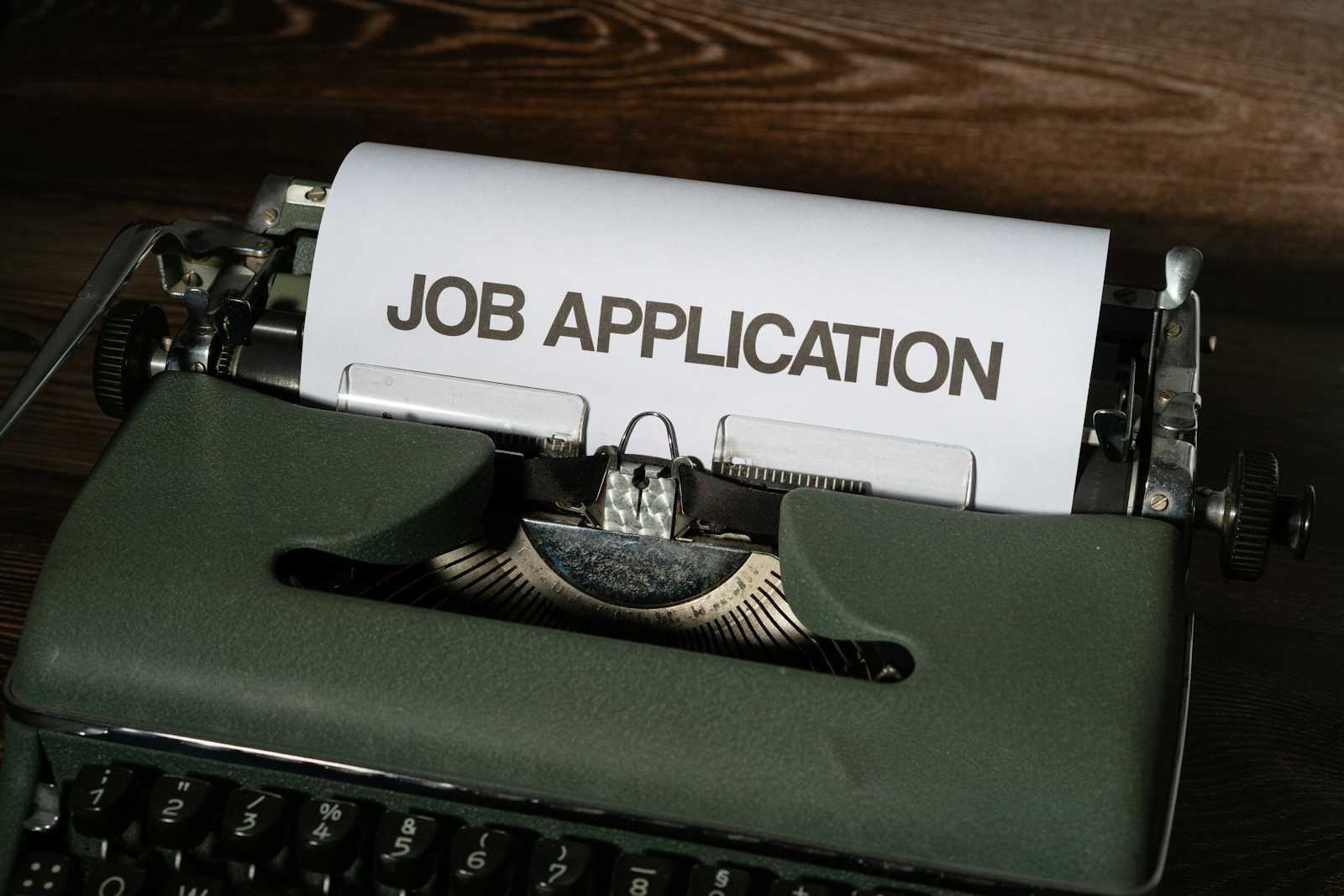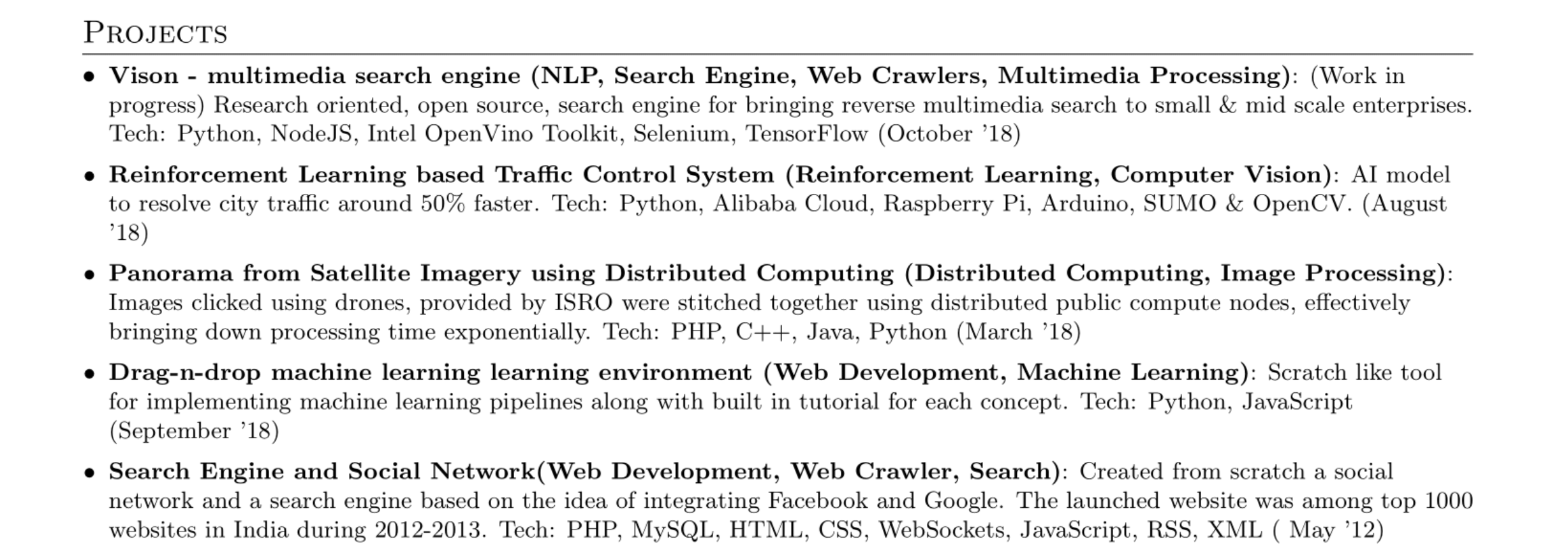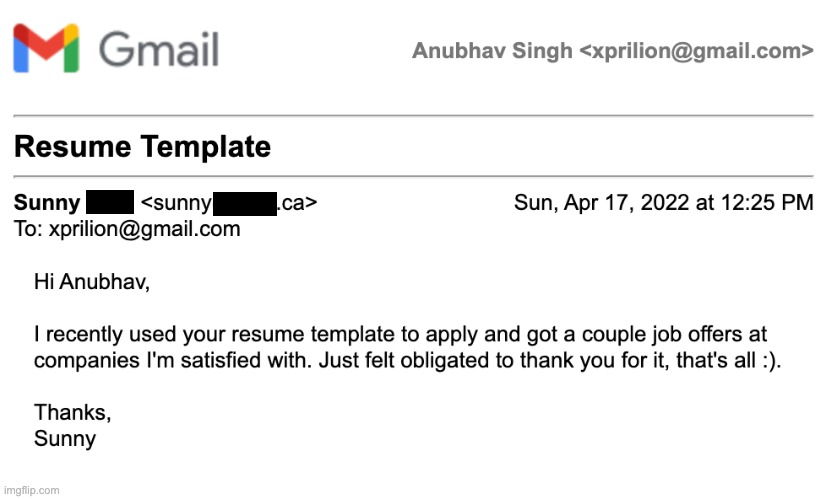Resume Template by Anubhav - Beat the ATS
24 March, 2024

tl;dr - I made a resume template that scores high on ATS systems and has become insanely popular! Since then, I have turned recruiter and finally feel confident in guiding you through resume building. How can you make your own? Learn here!
When in 2019, I started working on re-designing my resume, I was introduced to Overleaf by a friend. The platform built for collaborative editing of LaTeX documents was free and easy to use - just the way software is appealing to someone looking to start his career.
While learning LaTeX from zero was definitely a task, I decided to put some effort and go through the grill to ensure that I had eventually a resume which was fully custom created by me. Few weeks later, the resume was ready and I sent it through some online ATS checker systems - 92% score!
I was overjoyed. The work I had put in had led to a resume which was extremely likely to go through ATS systems! Some of this joy was also because now I knew I will in most cases not get rejected by a machine 😅
Further, when I shared the resume with my friends, they immediately wanted to copy the layout. To help them with this, I submitted the document I had created as an Overleaf template. This small decision, was going to create a huge difference.
Over the next couple of months, although I had stopped job hunting and instead embarked on my own venture - Callchimp.ai, I received many confusing emails congratulating me for my resume being shortlisted. Sometimes even with invites to online interview rounds. I decided to investigate.
Turns out, folks on the internet had been using my resume template to get through the screening rounds but would forget to completely replace my email with theirs and the ATS machines would pick my email during parsing.
Here are some instances of people sharing my resume template on the internet -
More than a million views at zhihu in article titled What is the preparation process for postgraduate study in the UK?
This post on Reddit titled: Universal Resume Format - ATS friendly - Freshers Of this Sub
I decided to make a Google search for my template and even today, if you typed in "resume template by" on Google and waited for the suggestions, you would see something like this -

I was blown away! Something I had created mostly just for myself and my friends was being used by folks who I did not know. Soon, I also started getting emails and LinkedIn messages thanking me for the resume template. The bliss!
Interestingly, I had even put up my calling number on the template itself which became an immediate concern for me. I then edited and re-submitted the template with my phone number crossed out.
After almost 5 years of releasing the resume, I realise that since that template is being used by so many, I can probably write a short article about my thought process that went into writing that template.
I will be dissecting the template in its current form and will talk about why I created each section the way it has been created. Here's how the entire resume looks like -

NOTE: This resume was created in 2020 and has since stayed so, the details mentioned here are mostly very outdated.
Disclaimer done, let's begin!
Resume writing
Throughout this discussion, I will assume you're someone who is starting their career or are in an early stage of your career because when I made this template, I was at that stage of my life.
In a nutshell, there are a few things to keep in mind even before you start putting content into your resume:
"DRY" - don't repeat yourself.
Use the real-estate of the A4 sheet available to you. Don't leave it blank, don't fill it with random details.
"Keywords" are the trick to beating ATS algorithms
Only write about most recent details
Before putting in any text on the page, ask, "is this text telling something about me or inciting curiosity enough for the interviewer to ask a question about it".
Use correct spellings, grammar and punctuation - there's always a space after a these characters - comma, colon, semicolon, hyphen, and others.
Maintain reverse-chronological order. Latest details first.
Use simple language.
Use numbers
Have verifiable links
Be honest
These in mind, let us jump into the sections!
Header - Name and Contact
Let the first words in your resume be your name. At the very start, you want to inform your interviewer about the most critical parts of your candidacy - your identity and ways to reach you.

In my resume, I chose to include my portfolio website and my Github profile as places where the reviewers can go to if they want to explore more about me, beyond my resume. Also, a well maintained Github profile serves as proof of your work beyond the projects mentioned within the resume. A lot of time, if interested in your hiring, the interviewers will go through your links to look for indications of work that you have done which might be more strongly relevant to their requirements than the ones mentioned on the resume.
Education section
In the education section, try keeping only your most recent two degrees and if you're in more senior stages of career, one is enough. Sort them reverse chronologically.

There is really no need to mention where you did your Junior College or childhood schooling from. While it is important to mention your GPA, its not the most important part of your education history unless its stellar. The courses you took during your graduation are far more important because they add to the keyword density of your resume, offering better ATS matching.
Use this section to add keywords that capture broad fields of computing you might be interested to get a job in. For example, if you're not looking for jobs in Android app development and you did study it as a course in college, skip its mention.
Skills section
After adding the broad domains of computing you're interested in, in the previous section, use the Skills section to bring in keywords which are highly relevant to the job profiles you're interested in. When recruiters put up job descriptions in the ATS systems, the systems will use keywords found in those and match them against they keywords found in your resume.

In this section, try not to go above one line in each sub-section. Further, don't repeat technology names across sections. Make sure to follow the correct naming and capitalisation of products and technologies you mention.
Experience section
The experience section is very powerful and needs to be created carefully. At the same time, it is one of the two section which should change according to the job description you're applying to. Try to include past jobs/internships/contractual roles you have held such that what you write about them might have matching keywords with the role you're applying to. Recruiters too will always take a look at this section to determine if you have any sort of experience which relates to the role you're applying for.

As you might have noticed in the sample above, there's a method to writing the experience section. Usually we're not able to reveal exact details of what we did at any organization. Further, many a times the recruiters might not even know the organization's name are details about which you're talking in the section. To solve this, we must try to give the person reading this section a fair idea of what the organization was and what your role there entailed.
Sometimes you might not have the same keywords available. In these cases, you can follow this decreasing order of preference for what could be included -
Experience with directly matching keywords from the job description
Experience with technologies matching with the job description
Experience with the domain in the job description
There is definitely a possibility that none of these are applicable to you. In those cases, make sure you can match some keywords directly in your project section.
Projects section
This section is extremely critical for freshers and early career candidates. Usually once you've been in any field within technologies, you're likely to stick to them as you move up the corporate ladder. However, project section allows you the flexibility in the earlier years to jump tracks and get started with any field of your choice.
In this section, in reverse-chronological order, list down projects which are relevant to the job description you're applying to. This is one section which isn't constrained by your past academic choices or jobs that you have had. Hence, this is the section which you can treat like the canvas you paint on from a blank sheet.
Make sure to include relevant and recent projects only. Something you built 10 years ago only matters if you wrote any popular open source project.

While you're not able to see it in the image, every project name has been linked to its relevant Github repository. This is important to let your recruiters see the code you think is good enough to be in your 1-page introduction with them.
Publications section
This section is optional. Some of us involve in research and other technical content creation and it helps to include those in your resume. Try to stick to your most impressive and impactful pieces (some of us who are into creating content often have 100s of created pieces) which are relevant to the job description. If possible, provide links to the content such that one can read/view it.

It is not necessary strictly to stay in reverse-chronological order in this section. Sometimes, something we created long back has had a stronger impact than what we might have done more recently. Try to keep your most impressive piece at the top, often recruiters will not even look at the second entry if the first one doesn't immediately interest them.
Honors and Awards section
Another section that is optional, it is a very good to have section which you can use to flex awards/titles/recognitions you have received over the years. Again, its not absolutely required to be strictly reverse-chronological in this section. However, if you have achieved several, try to include the ones which are most impressive and relevant to the job description. Don't list everything, top 2-3 are enough.

Volunteer Experience section
This section is again optional, but in my opinion a much better move over "hobbies" or "declaration" section that some people keep in their resumes. I really cannot hire people based on their declaration of truth, it is implied - I was not going through the resume expecting that at any moment the candidate might spring on me a fake trap.
Further, the volunteer experience section shows the kind of things you involve yourself with in your free time. Its a move over "hobby" section because instead of collecting and pasting stamps onto a journal (no offence to hobbyist stamp collectors, even I like doing this!), you were able to show something in which you likely involved with people and the societies around you. This is a better showcase for your team collaboration experience compared to hobby activities.

All these done, you should have a comprehensive resume which is rich in keywords that match the job description that the ATS uses to screen through your resume. With some luck, it is likely to go through!
Conclusion
I hope you were able to understand some of the thought that went through my mind while preparing my resume. You might have different opinions and ideas, will be very happy to go through them if you put them in the comment section!
Also, I love it when folks tell me that they used my resume and were able to land an interview or a job! Do let me know!

Once again, here's the link to the template - Resume Template by Anubhav on Overleaf.